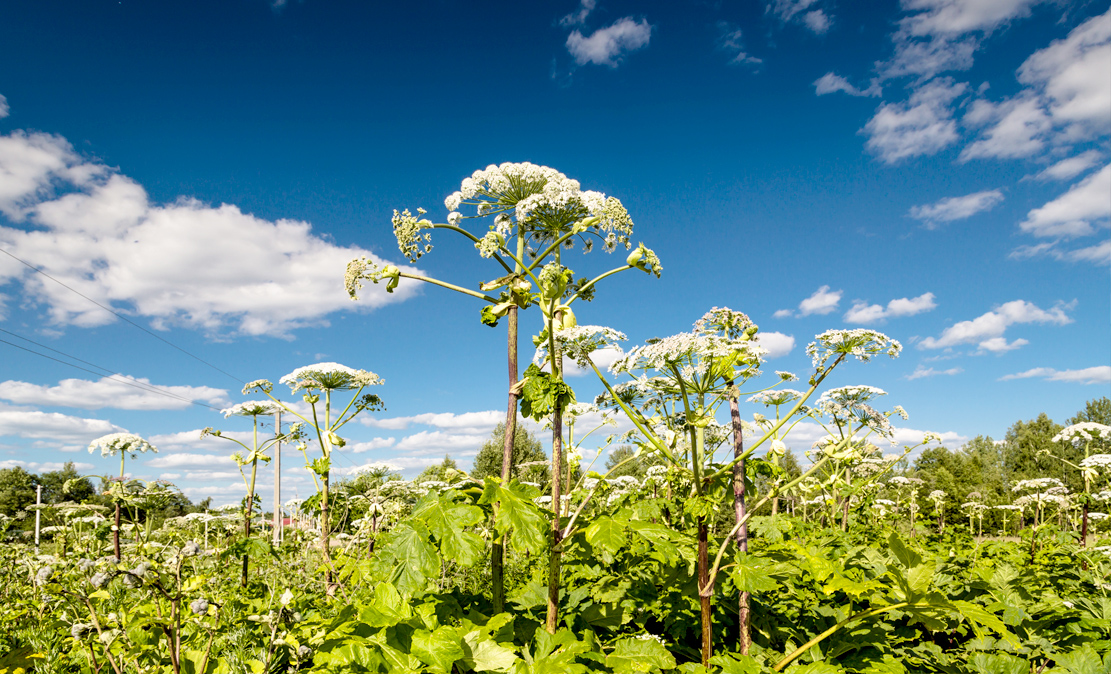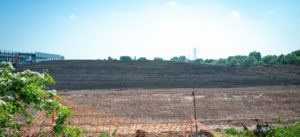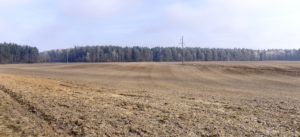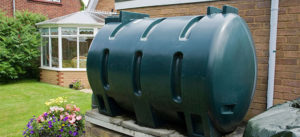Giant hogweed is spreading and with it the danger it presents to humans. Classed as the UK and Ireland’s “most dangerous plant”, new reports show it is growing rapidly.
While Japanese knotweed gets bad press – and not without reason – it is the harmful sap of giant hogweed that’s a real health hazard. Indeed, the New Journal of Botany describes it as a “threat to public health”.
In recent weeks, several reports have illustrated the danger giant hogweed presents. One young man and his eight-year-old brother were left with golf ball-sized blisters after coming into contact with it while playing football in a park. He said that the blisters were so painful he was barely able to walk at one point.
A new interactive map that tracks reports of plants in the UK shows that it’s quickly spreading. Experts are warning that is flourishing in some areas of the UK. The Lancashire Wildlife Trust has warned families to be aware of giant hogweed because it is spreading so rapidly around the county.
So, what makes giant hogweed so dangerous? And what can be done to prevent it spreading?
What makes giant hogweed dangerous?
Giant hogweed is classed as an ‘invasive alien plant’. That means it is not native to the UK and Ireland and has the ‘potential to cause harm to the local environment, the economy or human health’.
While Japanese knotweed is harmful to the environment and has economic impacts, giant hogweed is a real danger to humans. What makes it so dangerous is its sap.
- Once the skin contacts the sap, it makes the skin extremely sensitive to sunlight. This is due to a chemical compound within it.
- Within 24 to 48 hours of exposure to the sap, skin starts to react to it.
- Around three to five days later, skin starts to change colour and the damage becomes visible. This results in painful blistering and scarring.
In some cases, the skin that was harmed flares up whenever the person is out in sunlight. This is due to something called phytophotodermatitis, and it can take years for the condition to heal.
What does it look like?
Many people come into contact with giant hogweed without noticing. That’s because it bears a resemblance to cow parsley, which isn’t dangerous. As the name suggests, it is identified by its sheer size. Its tall stems are often purple and much thicker than its cow parsley cousin. The plant can grow to more than three metres (10ft) in height and the umbrella-like flower heads can measure up to 60cm (2ft) wide.
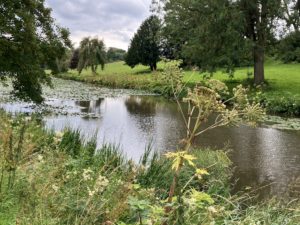

Why it’s spreading
Giant hogweed is usually found by riverbanks and can be seen from spring until autumn. Its seeds are transported via water. And it is its dependence on damp conditions and water that experts believe is causing it to spread across the UK and Ireland.
Guy Barter, chief horticulturist at the Royal Horticultural Society, pointed to recent heavy rain and flooding as the reason it is spreading. In an interview with The Times, he said that the conditions meant the plant’s seeds were now spreading to previously untouched areas.
Although usually found along rivers and streams, neglected urban places, woodland clearings and roadsides are increasingly becoming a habitat for the plant.
How to get rid of giant hogweed
Although you don’t need to remove giant hogweed by law, it is wise to do so to prevent injury to the public. It is an offence to permit the plant to spread in the wild and landowners can face anti-social behaviour orders for failing to remove it.
UK government rules state you “must not import, transport, keep, breed, sell, use or exchange, grow or cultivate or release into the environment” invasive species.
Getting rid of giant hogweed requires a high level of care. Removing it without using the appropriate protective equipment could lead to clothing, equipment and skin becoming contaminated. As the sap remains toxic, not cleaning any equipment used could lead to it infecting skin at any time. Only professionals should attempt to remove large areas of giant hogweed.
What if I accidentally touch the plant?
The First Aid Training Co-operative states that if you are burned by giant hogweed you should:
- Wash the affected area with cold water as soon as possible.
- Keep away from sunlight
- See a doctor if you have any serious reaction
What if I see the plant?
If you see giant hogweed, keep well clear. The sap can easily transfer to you even if you brush past it. If you see it in public areas, report it to the landowner. They must then put up signs warning the public of the danger. If you are a landowner and want it removing, you can contact our experienced team today for advice.

